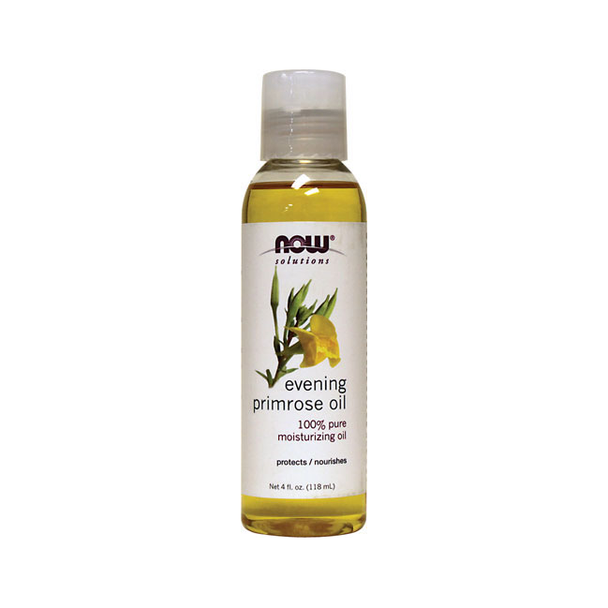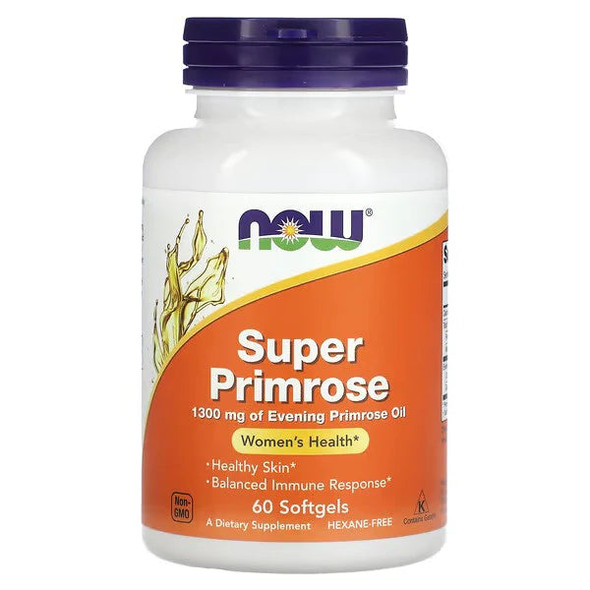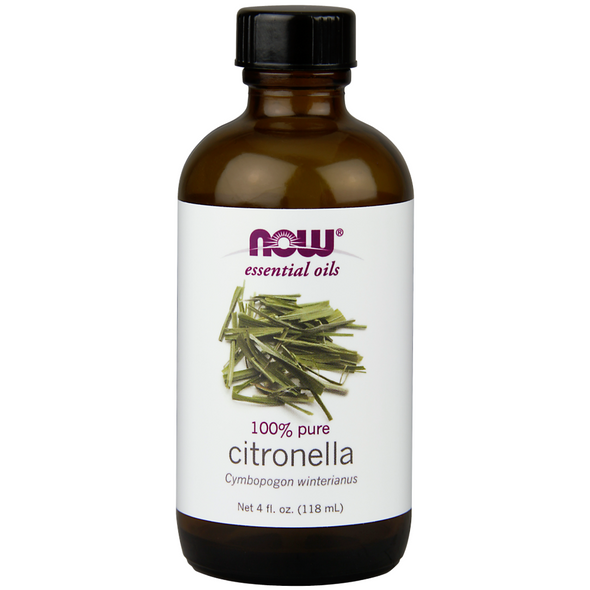Now foods
Now foods Solutions 100% Pure Evening Primrose Oil
- SKU:
- GAN-35551
- UPC:
- 733739076908
- Minimum Purchase:
- 1 unit
Description
Overview
NOW Foods - NOW Solutions Evening Primrose Oil - 4 fl. oz. (118 mL)
NOW Foods Evening Primrose Oil (EPO) is an all-natural vegetable oil derived from Evening Primrose seeds. NOW Foods Evening Primrose Oil is pressed at a low temperature to obtain a pure, natural, virgin oil without the use of solvents, fillers or preservatives. Native Americans valued Evening Primrose as an herbal treatment for a variety of ailments. NOW Foods Evening Primrose Oil contains essential fatty acids (EFA's) that support body tissues, including skin. NOW Foods Evening Primrose Oil combined with zinc may be helpful for a healthy complexion. Gently massage NOW Foods Evening Primrose Oil into your skin to ease dryness or skin irritation.NOW Foods Evening Primrose Oil is rich in Gamma Linolenci Acid (GLA), and has been used historically to help promote healthy, glowing skin. Each 1 ml of NOW Foods Evening Primrose Oil contains 80-100 mg of GLA - an essential fatty acid that can nourish and protect healthy skin cells. NOW Foods Evening Primrose Oil is a pure and natural virgin oil that is pressed and expelled at cold temperatures.
- 100% Pure Moisturizing Oil
- GLA & Fatty Acids for a Healthy, Vibrant Complexion
- Expeller Pressed
- Vegan & Vegetarian
- Free of Paraben & Hexane
- Gluten Free
- Non-GMO Project Verified
How is your Super Primrose processed, and is it hexane-free?
NOW Super Primrose is extracted by a natural mechanical method (expeller pressed) without the use of hexane or other chemical solvents. Super Primrose is a more potent, concentrated form of Evening Primrose Oil. Evening Primrose Oil is a good source of gamma linolenic acid (GLA), an Omega-6 essential fatty acid that imparts important health benefits.
Primrose oil is valued for its gamma–linolenic acid (GLA; 18:3 omega-6) content. GLA is claimed to be effective in reducing inflammation and treating atopic eczema, diabetic neuropathy and certain cancers (McDonald and Fitzpatrick, 1998). GLA rich oils are effective in the treatment of cardiovascular disease, age related diseases and alcoholism (Broadhurst and Winther, 2000). In our diets, GLA is obtained from the conversion of the dietary precursor linoleic acid via the action of delta-6-desaturase. However, impairment of the delta-6-desaturase activity may result in the functional deficiency of GLA and leads to pathogenesis associated with inflammatory, autoimmune and other diseases (Wu and Meydani, 1996). Supplementation with GLA helps in alleviating some of the symptoms of the above health conditions. At NOW Foods, Primrose oil is analyzed for its GLA content by performing gas chromatography of methyl esters of fatty acids. NOW uses this method to confirm the identity of Primrose Oil by its unique fatty acid profile and measure the amount of GLA present in it. This is achieved by separating GLA from other fatty acids especially Linoleic and Linolenic acids. Linoleic and Linolenic acids are also present in common oils such as soybean oil, flax oil and walnut oil but GLA is unique to Primrose and some other special oils. The GLA content is accurately measured by using internal standards technique. All these steps are taken to assure that our customers get what they are buying Primrose oil for: Authentic Primrose Oil and GLA content more than 9%.
What are essential oils?
Essential Oils are the naturally occurring volatile oils obtained by steam distillation or cold pressing (expression), having the characteristic aroma of the plant part from which it was derived. These 100% pure oils are "neat", meaning they have not been processed, diluted or manipulated in any way with solvents or other additives. Although a particular species of plant harvested and distilled for its essential oil during a particular growing season in a specific region may produce a fragrance that differs from the same species grown in a different region, many of the main chemical markers and physical specifications may be very similar. NOW's citrus fruit essential oils are 100% cold pressed. NOW's other essential oils are typically 100% steam distilled.
Do essential oils have a grading system to tell me which is better?
There is no official grading system that grades essential oils as A, B, C or Therapeutic grade. All NOW 100% pure essential oils are accurately labeled as such and are the highest purity and quality available.
Are NOW essential oils pure or do they have anything added to them?
All of NOW's 100% pure essential oils are labeled as such. They also sell clearly labeled oil blends that are formulated with essential oils or absolute extracts and another oil as a base, usually pure grapeseed oil.
Natural Essential Oils by their very nature will vary slightly from season to season. NOW allows nature to take its course and does not add isolated compounds to the oil to try to standardize the naturally occurring variations of a particular oil. NOW takes both the organoleptic (sight, smell and taste) and chemical properties into account when selecting and testing NOW essential oils.
Steam distillation is a three-step process comprised of the following:
- The plant material is placed on a screen in a steam still. Steam from a boiler is introduced under the screen where the plant material is held. The steam vaporizes the essential oil in the plant material. Both steam and oil vapor rise to a condenser.
- The steam and oil are condensed to a liquid, and fed to a receiving vessel.
- The essential oil rises to the top of the liquid in the receiving vessel. It is separated from the condensed steam liquid (water or hydrosols). The water may be returned to the boiler and reboiled into steam.
- The whole fruit is scarified, which means the peel or rind is mechanically pierced to open the sacs containing the essential oil.
- The whole fruit is then pressed which squeezes out the juice and oil.
- The oil and juice, which contains the peel and other fruit solids, are centrifuged to separate the liquids and solids.
- The oil liquid layer is then separated from the juice liquid layer.






